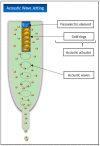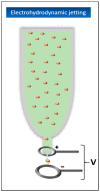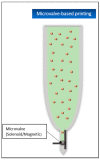3D Printing for Soft Tissue Regeneration and Applications in Medicine
- PMID: 33810541
- PMCID: PMC8066192
- DOI: 10.3390/biomedicines9040336
3D Printing for Soft Tissue Regeneration and Applications in Medicine
Abstract
The use of additive manufacturing (AM) technologies is a relatively young research area in modern medicine. This technology offers a fast and effective way of producing implants, tissues, or entire organs individually adapted to the needs of a patient. Today, a large number of different 3D printing technologies with individual application areas are available. This review is intended to provide a general overview of these various printing technologies and their function for medical use. For this purpose, the design and functionality of the different applications are presented and their individual strengths and weaknesses are explained. Where possible, previous studies using the respective technologies in the field of tissue engineering are briefly summarized.
Keywords: 3D bioprinting; additive manufacturing; regenerative medicine; soft tissue; tissue engineering.
Conflict of interest statement
The authors declare no conflict of interests.
Figures















References
-
- Foundation E.I. Yearly Statistics Overview Eurotransplant, 2019. [(accessed on 22 December 2020)]; Available online: https://statistics.eurotransplant.org/index.php?search_type=overview&sea....
Publication types
LinkOut - more resources
Full Text Sources
Other Literature Sources

